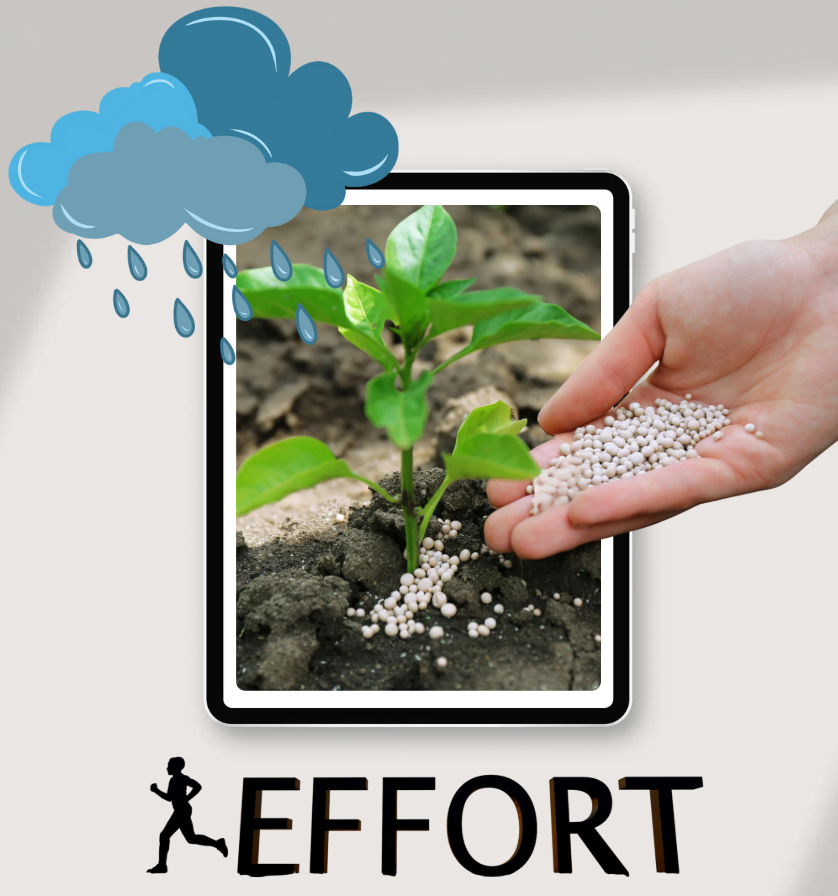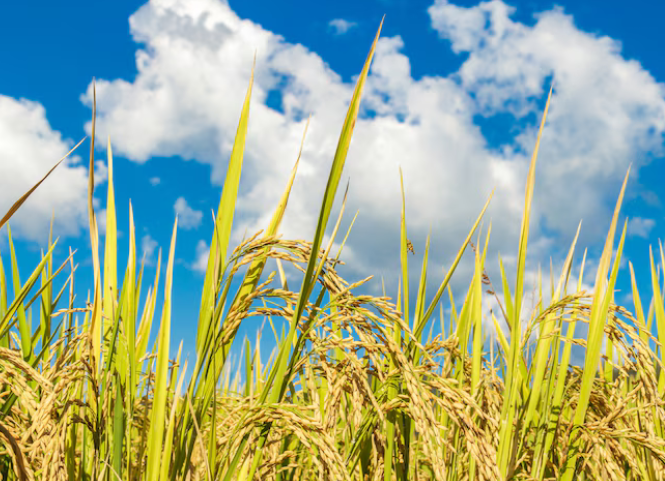
Top 5 Salt-Tolerant Rice Varieties in the Mekong Delta
A curated list of the 5 best-performing salt-tolerant rice varieties widely grown in Vietnam’s Mekong Delta – helping farmers maintain stable yields amid increasing salinity intrusion.
Table of Contents
- Why Salt-Tolerant Rice Is Essential in the Mekong Delta
- Key Criteria for Selecting Salt-Tolerant Rice
- Top 5 Salt-Tolerant Rice Varieties Today
- Tips for Growing Rice in Saline-Affected Areas
- Conclusion
1. Why Salt-Tolerant Rice Is Essential in the Mekong Delta

The Mekong Delta, especially coastal provinces such as Bac Lieu, Soc Trang, Tra Vinh, Kien Giang, and Ca Mau, often face salinity intrusion during the dry season (February–May).
This causes:
- ✅ Serious reductions in rice yield
- ✅ Root damage and stunted plant growth
- ✅ Total crop loss if salinity spikes during seedling or heading stages
➡️ Choosing salt-tolerant rice varieties is a critical solution for maintaining stable production in affected areas.
2. Key Criteria for Selecting Salt-Tolerant Rice
When choosing rice varieties for saline conditions, farmers should consider:
- Salinity threshold tolerance (especially at seedling, tillering, and heading stages)
- Growth duration (preferably short to medium cycles)
- Grain quality (white, soft, sticky)
- Disease resistance (blast, bacterial leaf blight, grain discoloration, etc.)
- Adaptability to rice–shrimp systems or seasonally saline soils
3. Top 5 Salt-Tolerant Rice Varieties Today
🌾 1. OM2517
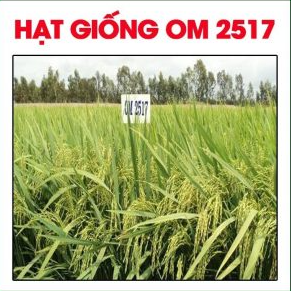
- Salinity tolerance: Up to 4‰ at seedling stage
- Growth duration: 95–100 days
- Advantages:
- Strong stems, low lodging risk
- Moderate resistance to brown planthopper and blast
- Yield: 6–7 tons/ha
- Best suited for: Rice–shrimp systems in Bac Lieu, Soc Trang
🌾 2. OM6677
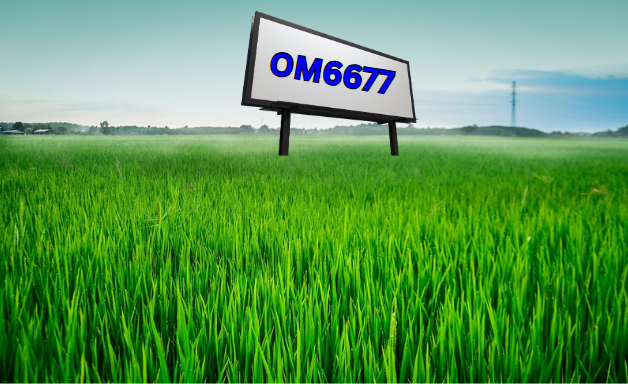
- Salinity tolerance: 3–4‰ throughout the growth cycle
- Growth duration: 100–105 days
- Advantages:
- Long grains, white and slightly aromatic rice
- Suitable for both domestic consumption and export
- Good resistance to bacterial leaf blight and blast
- Best suited for: Coastal areas in Tra Vinh and Ca Mau
🌾 3. OM9582
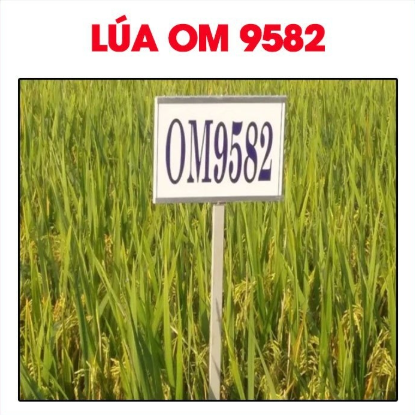
- Salinity tolerance: Up to 3‰ during heading stage
- Growth duration: 90–95 days
- Advantages:
- Vigorous growth and fast recovery after saline stress
- Soft, glossy rice; highly marketable
- Best suited for: Spring–summer crops where salinity rises early
🌾 4. ST24 / ST25 (Mild salt tolerance)
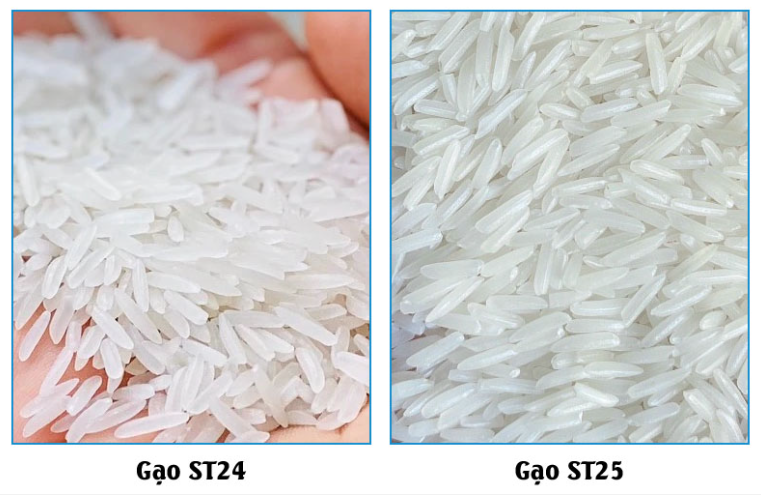
- Salinity tolerance: 2–2.5‰
- Growth duration: 95–105 days
- Advantages:
- World-renowned for quality; high market value
- Best for fresh and mildly saline transition zones
- Best suited for: Border zones between freshwater and brackish areas (e.g., Chau Thanh, Vinh Chau)
📌 Note: Not recommended for zones with salinity >3‰ for prolonged periods
🌾 5. MTL560
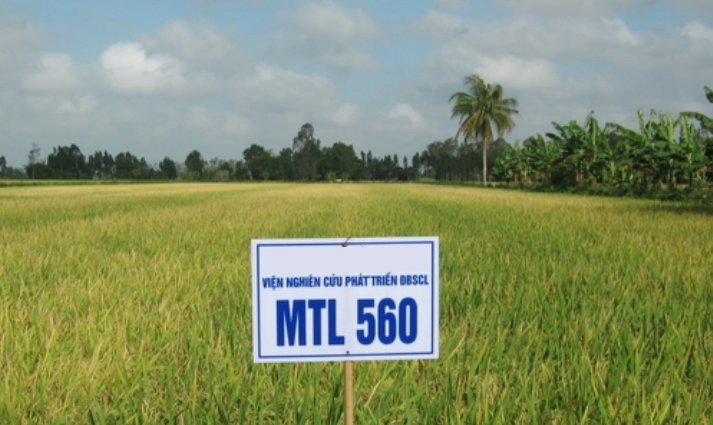
- Salinity tolerance: 4–5‰ at seedling stage
- Growth duration: 100–110 days
- Advantages:
- Well-suited for rice–shrimp rotations
- Strong disease resistance
- Long grains, minimal chalkiness
- Best suited for: Lower Hau River regions with seasonal saline intrusion
4. Tips for Growing Rice in Saline-Affected Areas
- Regularly monitor irrigation water salinity using an EC meter
- Sow early to avoid peak salinity (usually March–April)
- Avoid using water with salinity >2‰ during seedling stage
- Apply balanced fertilizer, especially potassium, calcium, and silicon to strengthen plants
- Practice crop rotation (e.g., rice–shrimp, rice–vegetables) to improve soil health and reduce disease pressure
5. Conclusion
Choosing the right salt-tolerant rice variety is a strategic move for farmers to adapt to climate change, reduce crop risks, and optimize productivity in the Mekong Delta.
👉 Don’t rely on word-of-mouth recommendations — base your decision on the actual salinity levels in your field for the best results!
Bình luận
Những bình luận mới nhất
